This is an update of two of my older posts about Australian animals, mainly focused on animals that live close to the water. The first two parts are here: part 1 and part 2. I have added a few more photos of animals that I stumbled upon on bushwalks, or close to home, in parks in and around Melbourne.
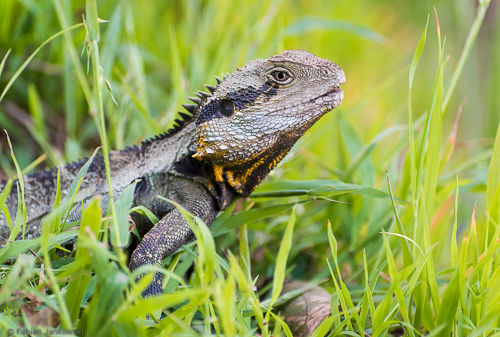
In general, I have to say that even though some of the animals listed here can be quite dangerous, it is very unlikely to encounter them in the wild. Most encounters were just by accident when going off-trail in reasonably remote areas. This list should be representative of the Australian states of Victoria, New South Wales (NSW) and Tasmania. That is, you are likely to encounter these animals at some point when venturing outdoors, especially into more remote areas.
I have marked the updates or additions in red colour.
Kangaroo
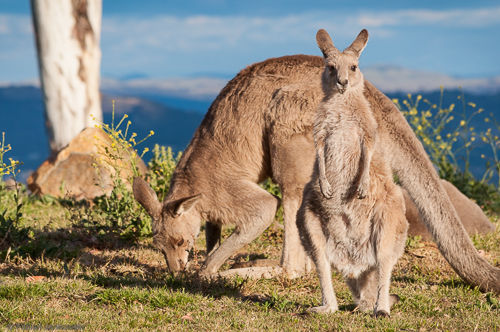
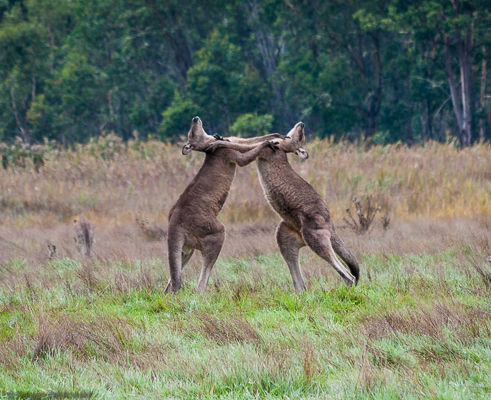
Kangaroos are very common all over Australia. They are one of the species that you will see nearly everywhere – even in the big cities. They are generally friendly, but have quite sharp claws and can dish out strong kicks.
Wallaby
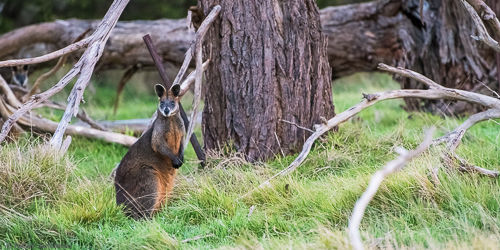
To simplify it, Wallabies are small kangaroos that look only slightly different than their larger brothers.
Pademelon
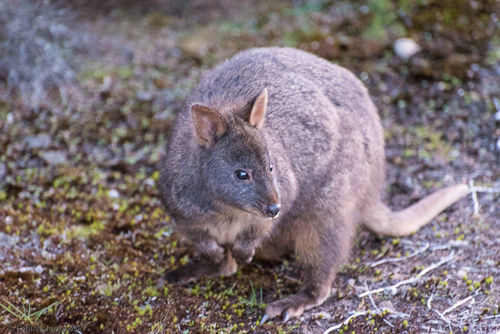
Pademelons are basically small wallabies. Their tails are shorter and thicker. Their heads have a triangular shape, and their ears are shorter.
Koala
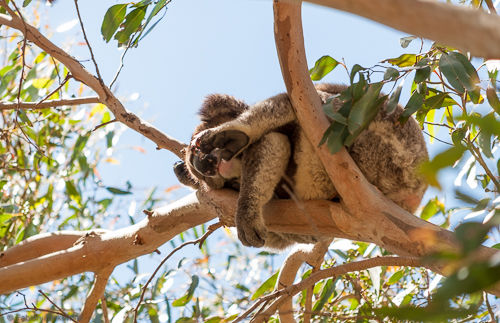
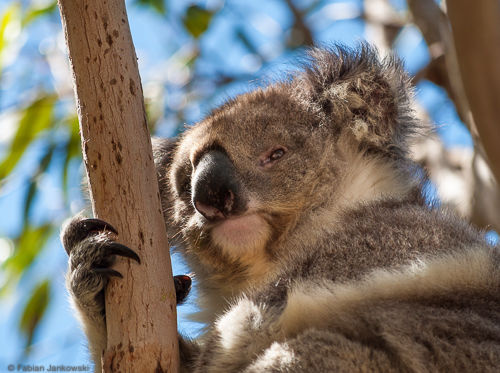
Together with the kangaroo, the koala is symbolic for Australia. They can be found in many places just outside of the cities, but it can be hard to spot them sitting in the trees. They sleep a large fraction of the day and do not move a lot. They can, however, growl like the best death metal singer.
Wombat

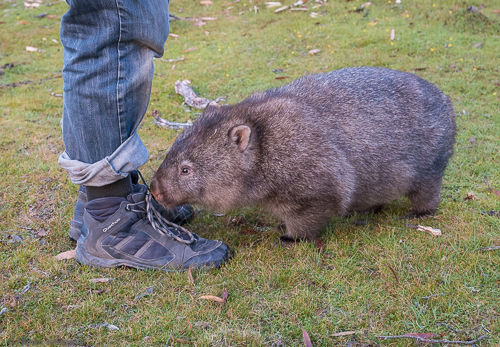
Wombats are thick, muscular and strong animals that can be found fairly often in the bush.
Possum
These are nocturnal animals that can be found nearly everywhere and are common in the cities as well. They are incredibly curious and can be a pest for campers who did not secure their food storage.
Being nocturnal animals, it is hard to get a good photo of them.
Tiger snake

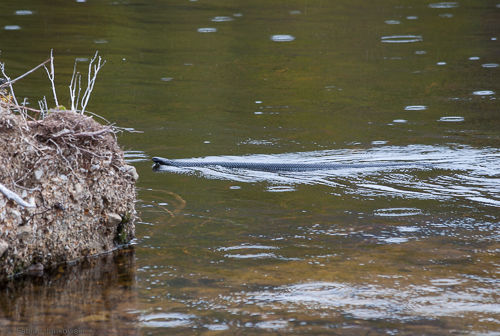
The tiger snake is the first animal in this list that can be dangerous for humans. They are pretty common in the bush in Victoria, NSW and Tasmania and are quite active during summer, so it is likely that you will encounter one sooner or later on a bush walk. While they are extremely venomous, they are timid creatures in my experience and escape quickly when they feel a vibration on the ground. They are harmless and can be easily avoided. The only danger is when they feel threatened or get stepped on. Closed and sturdy boots are a must when venturing out into the bush.
They are surprisingly good swimmers, which I could not believe until I saw it.
Brown snake
They are supposedly faster and more aggressive than the other Australian snakes. I haven’t seen one yet in the wild.
Copper head snake
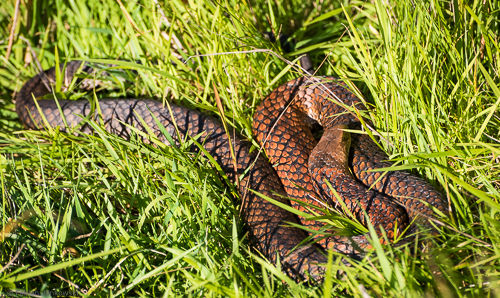
The copper head snake seems to be a very shy snake, which is often encountered near water, or swamp areas. We stumbled upon a relatively large specimen when walking off-track when following a wallaby. The snake was basking in the sun.
White-lipped snake
Apparently, they can be found in some caves. Not seen yet.
Red-bellied black snake
Not seen yet.
Death Adder
Not seen yet.
Coastal and inland Taipan
They are supposed to be the most venomous snakes in Australia. While the coastal taipan has a reputation to be fierce and aggressive, the inland taipan is said to be shy. The likelihood to be bitten by one is very low.
Not seen yet.
Echidna
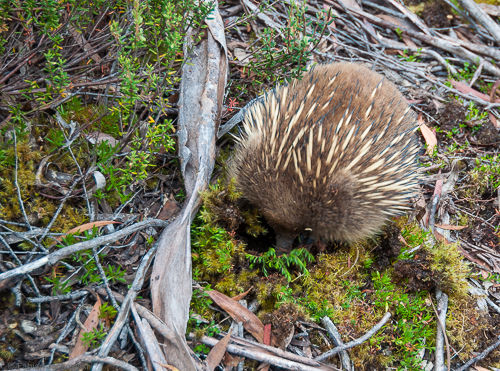
The echidna is a small animal that looks like a crossbred between a porcupine and an anteater. In case of danger, it hides its head in a defensive burrow in the ground and arrests itself in it in order not to be pulled out. They are one of the few species of egg-laying mammals.
Kookaburra
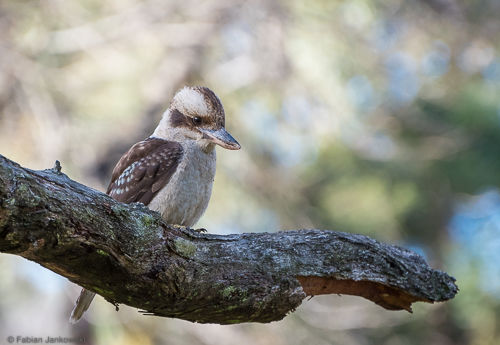
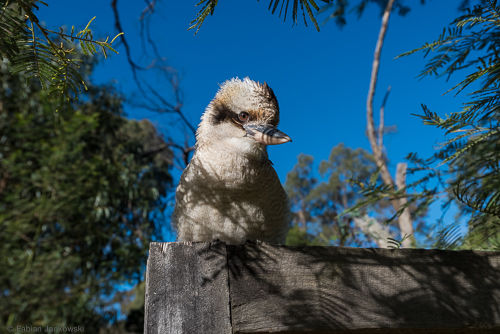
Kookaburras are relatively large birds that have a distinctive laugh.
Rosella
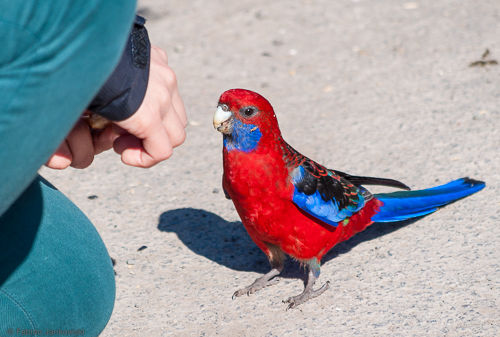
Galah

Cockatoo
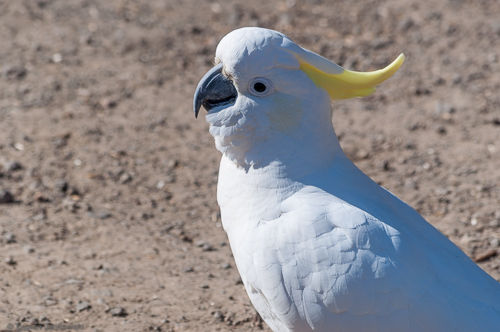
Magpie

These are very common in the cities and also outside. They are infamously known for swooping people riding their bikes.
Currawong
Apparently, they are one of the smartest species of birds and are known to be able to open zips from backpacks to eat the snacks of bushwalkers.
Lorikeet
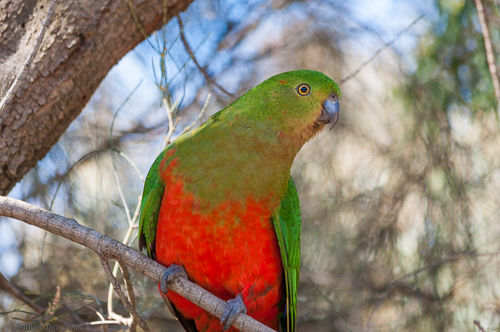
Penguin
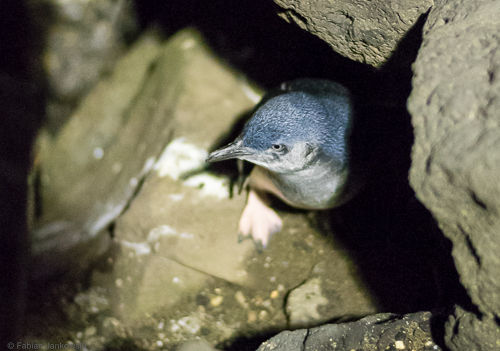
Wild penguins can be spotted at St. Kilda beach in Melbourne for example.
Australian white ibis
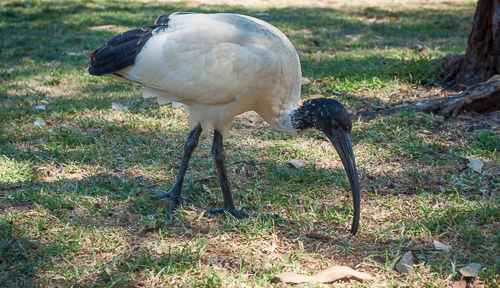
Superb fairy-wren
No photo yet.
Myna bird
No photo yet.
Tawny frogmouth
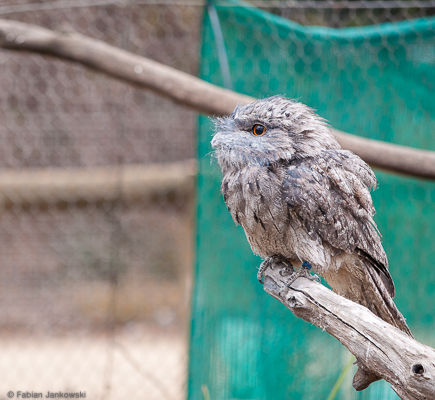
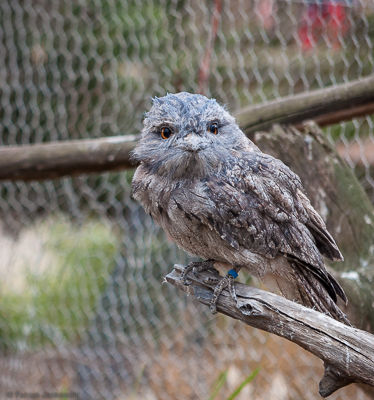
Bassian thrush
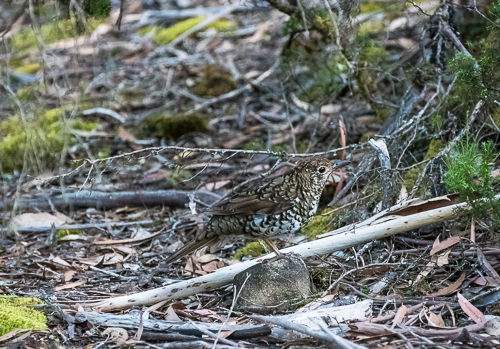
Spotted quoll
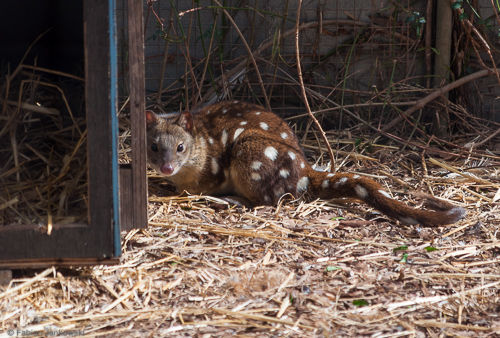
They look and behave like very small cats. I have seen some in the wild, but this photo is from an animal sanctuary. They are also nocturnal animals.
Quokka
They are supposedly the happiest animals on Earth with a constant smile. Not seen yet.
Tasmanian devil
They look a bit like dogs with a prominent jaw and teeth. They are endangered by a form of skin cancer that prevents them from eating. Not seen yet in the wild.
Tasmanian tiger
Apart from the other animals listed here the Tasmanian tiger is extinct since the 1930s.
Dingo

Dingos are wild dogs, which are common in the Northern Territory.
Leeches
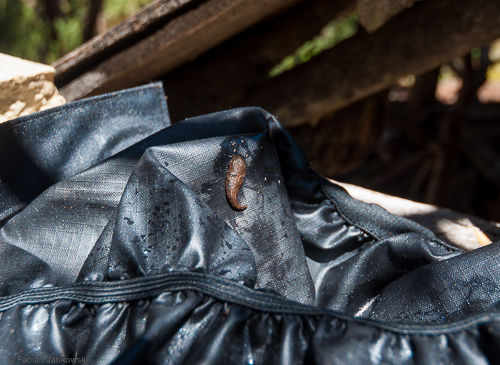
These blood-sucking worms are common in wetlands in Tasmania, but can also be found in the Blue Mountains in NSW. They are one of the reasons why wearing gaiters is a good idea.
Bats
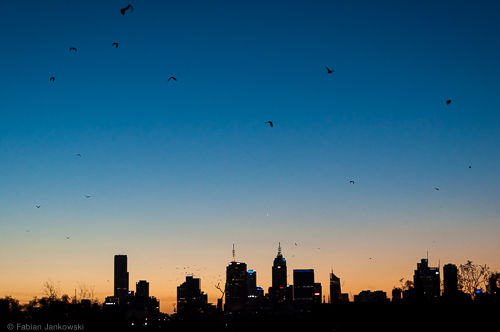
Jack jumper ants
Jack jumper ants are closely related to bull ants. They can not only bite you with their mandibles but can also sting you with a stinger on their back. In a sting, they inject a venom that can potentially induce an anaphylactic shock. They are said to be aggressive and travel vast distances from their nests.
Not seen yet.
Huntsman spider
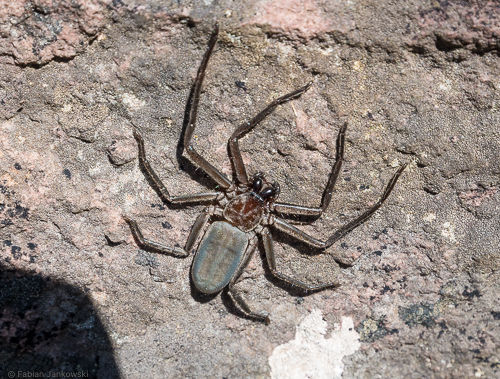
Redback spider
Not seen yet.
Sydney funnel-web spider
Not seen yet.
White-tailed spider
I have seen them often in the countryside near Canberra, where they live in dark places sheltered from the sun.
No photo yet.
Emu
No photo yet.
Cassowary
No photo yet.
Platypus
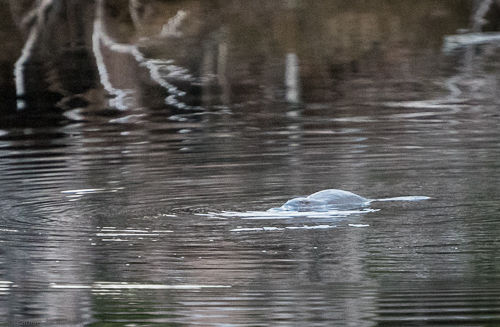
The platypus is one of the few mammals that lay eggs. It is also unique in that it is among the small group of mammals that are venomous, with the male platypus having a venomous spur.
Eel
No photo yet.
Crocodile
Not seen yet in the wild.
Alligator
Not seen yet in the wild.
Great white shark
Not seen yet in the wild.
Stingray
No photo yet.
Box jellyfish
The box jellyfish have tentacles that carry a potent venom. Their sting can be even fatal to humans.
Blue bottle
Another name for the blue bottle is Portuguese man o’ war, and it is a colony of different polyps.
Blue-ringed octopus
Not seen yet.
Weedy sea dragon
Not seen yet.
Skink
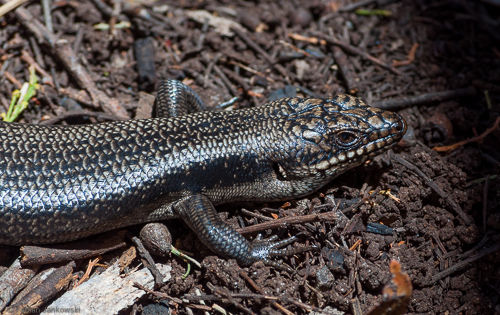
Gippsland water dragon

Queensland dragon
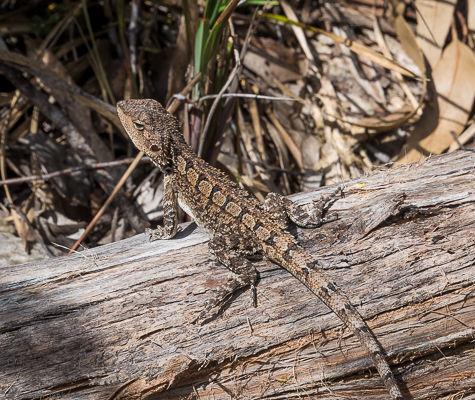
The actual species is not clear yet. To be updated later.
Blue-tongued lizard
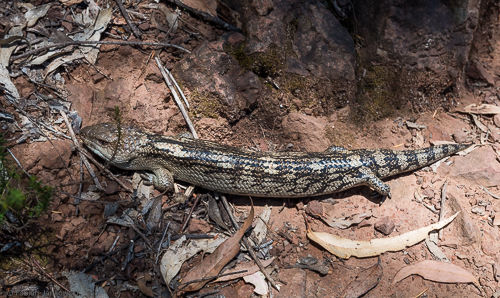
Frilled-neck lizard
These lizards sport an impressive piece of skin around their neck that they extend when threatened.
Not seen yet.
Southern right whale
Seen once, but no photo yet.
Seal
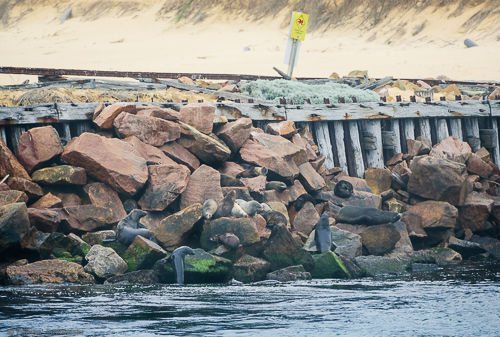
Dolfin
See once, but no good photo yet.
Pelican

Crab
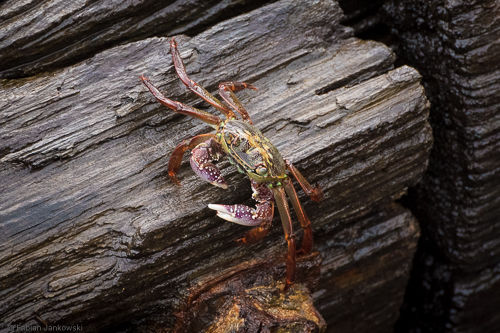
Yabby
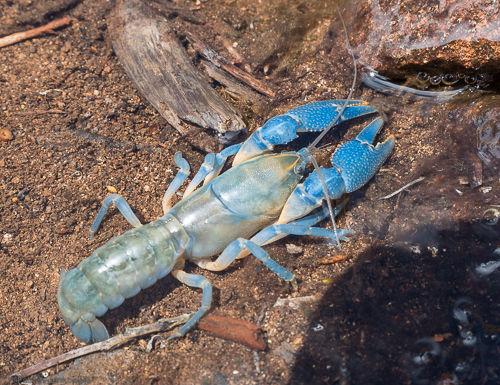
A yabby or common yabby is a species of freshwater crayfish that is common in many mountainous areas in Victoria, NSW and Tasmania. They look like small lobsters and live in thumb-sized holes in the soft soil. Their colour varies from light blue to green-brown.